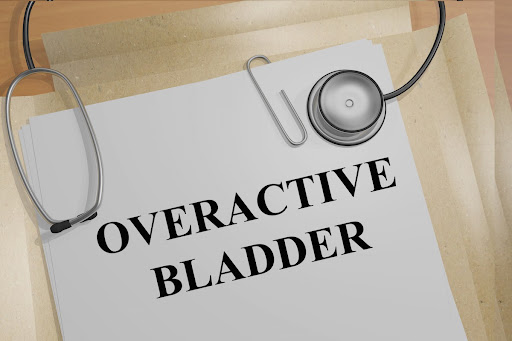Overactive bladder can happen at any age, but at KCUC, we predominantly see it in older patients. It affects an estimated one in 11 adults in the US. While it is very common in older adults, it is not considered a “normal” part of aging. If you’re suffering from overactive bladder, know that there are plenty of ways to treat this condition from behavioral therapy to medications to surgery. Don’t suffer along thinking this is normal. The urologists at KCUC can help. Here’s a little more information about overactive bladder that may help you understand the condition and your options.
What Is Overactive Bladder?
Overactive bladder is a condition caused by sudden, involuntary contraction of the muscles in the wall of the bladder. Overactive bladder may result in an unstoppable need to urinate (urgency), even though the bladder may only contain a small amount of urine. If the urge is strong enough it can result in incontinence (leakage).
What Are the Symptoms of Overactive Bladder?
Symptoms of overactive bladder include:
- Frequent urination
- Sudden urge to urinate
- Urinating in the middle of the night nocturia)
- Incontinence (accidental leakage)
Because overactive bladder is such a personal and potentially embarrassing condition, it can cause significant social, psychological, occupational, domestic, physical, and sexual problems. But remember, these symptoms should not be considered a “normal” part of aging. We have many treatments to help you get your life back.
Other signs to look for include getting up in the middle of the night to urinate at least three times, urinating more frequently (at least eight times a day), sudden urgency, and incontinence.
What Causes Overactive Bladder?
A variety of conditions can contribute to overactive bladder, including:
- Stroke, multiple sclerosis, and other neurological disorders
- Diabetes
- Menopause in women
- Tumors or bladder stones in the bladder
- Bladder flow obstructions including enlarged prostate, constipation or previous operations
- Excess caffeine or alcohol
- Medications requiring ingestion of lots of fluid or medications that cause increased urination
- Incomplete emptying of the bladder (leaving less room to fill)
- Declining brain function due to aging that may interfere with signals between the brain and bladder
In addition, urinary tract infections (UTIs) can cause symptoms that mimic overactive bladder symptoms. In addition to a general physical exam, a pelvic exam in women and a prostate exam in men are helpful in excluding other contributing conditions. Urine analysis (to assess for infections) and occasionally urine cytology (to look for cancer cells in the bladder) are sometimes advised. In addition, ultrasound measurement of the amount of urine left after urination may provide additional information (obstruction to urine flow, weak bladder muscle). It is important to see a urologist to determine the cause of your symptoms.
What Are Treatments for Overactive Bladder?
Treatment for overactive bladder varies by patient. Some commonly recommended treatments include:
-
Pelvic muscle rehabilitation including kegel exercises, biofeedback and pelvic floor stimulation to improve pelvic muscle tone and prevent leakage
-
Behavioral therapies that teach people to regain control of their bladder through habit training schedules.
-
Medications to decrease the overactivity of the bladder muscle including (anticholinergics), estrogen for women, and a newer therapy – botulinum toxin (Botox) injection into the bladder muscle.
-
Surgery to decrease the overactivity of the bladder muscle
Surgery is not a typical treatment for overactive bladder, but in cases where symptoms are debilitating and unresponsive to other treatments, it can be employed. InterStim Therapy is the placement of an implanted device that sends electrical impulses to control the bladder, sphincter, and pelvic floor muscles. It is sometimes called a “pacemaker for the bladder”. Finally, reconstructive bladder surgery to enlarge the bladder and decrease the ability to contract can be used in severe cases.

